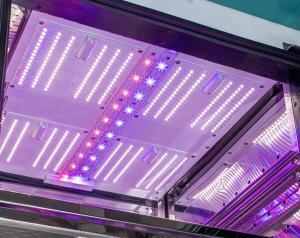The algal toxicity test according to ISO 8692 is a standardised method used to assess the toxicity of chemicals or effluents to freshwater unicellular green algae. This test measures the inhibition of algae growth as an indicator of the toxicity of the compound or mixture in question.
1. Applications
This test is crucial in environmental risk assessment of chemicals, pesticides, industrial effluents, among others, to protect aquatic ecosystems. It is widely used in ecotoxicology studies and to meet regulatory requirements of environmental agencies.
2. Importance of the test
- Sensitivity: Algae are primary photosynthetic organisms in many aquatic ecosystems, and their sensitivity to pollutants may provide an early signal of environmental perturbations.
- Ecological Relevance: The test reflects potential adverse effects on aquatic food webs.
- This method provides essential data for the classification and labelling of hazardous substances and helps to identify and minimise environmental risks associated with chemical releases.
3. Test Preparation
- The algae are grown on a suitable growth medium.
- Several dilutions of the test substance are prepared to obtain a range of concentrations to evaluate the dose-dependent response.
- Negative controls (without the test substance) are included to establish a baseline of algal growth.

4. Experimental conditions
- The algae are incubated under controlled conditions of light, temperature and agitation during the test period.
- It is crucial to maintain optimal conditions for algal growth and to avoid external factors that may influence the results.
5. Organisms to test
A single-celled green algae species, commonly Pseudokirchneriella subcapitata (formerly called Selenastrum capricornutum), is used because of its sensitivity and rapid growth.

6. Principle of the assay
- The test measures the effect of different concentrations of the test substance on algal growth over a specified period, usually 72 hours.
- Algal growth is quantified by measuring cell density, which can be assessed by direct methods (such as cell counting) or indirect methods (such as measuring absorbance or fluorescence of chlorophyll).
7. Considerations
Before selecting an incubator or chamber for climatic testing, it is important to consider the space available in the laboratory, the number of samples to be tested simultaneously, and the specific needs of the test.
8. Equipment used
- Climatic chamber for algae growth EGCHS ALG PRO 705 HR 2L LED, with 4000 K LED lights in the shelves.
- As a second option: TestingLab growth incubator model ERIS ALG INOX LED.
- Orbital shaker for Kitasato or Erlenmeyer flasks.


9. Temperature Control
- Temperature Range: Generally, the test is performed at a constant temperature of 21-24°C. It is crucial that the incubator maintains this temperature stable throughout the test.
- Accuracy: Accuracy of temperature control should be ±0.5°C to avoid fluctuations that may affect algal growth.
10. Lighting
- Light intensity: Algae require light to grow, as they photosynthesise. The incubator should provide constant illumination with an intensity of 60-120 µmol/m²/s (micromoles of photons per square metre per second), measured at the height of the algal cultures.
- Light spectrum: Light has a spectrum suitable for photosynthesis, commonly used are broad spectrum LED lights, e.g. 4000K, which simulate sunlight, optimised for algae growth.
- Photoperiod: A photoperiod of 24 hours of continuous light or, in some cases, a light/dark cycle (e.g. 16 hours of light and 8 hours of dark) may be used, depending on the specific requirements of the trial.
- In some cases, the use of LED lamps with different, independently controllable spectra is advisable.

11. Agitation
- Orbital shaking: To ensure a homogeneous suspension of algae in the culture medium, the test flasks are kept under constant shaking. Incubators are usually equipped with orbital shaking platforms with adjustable speeds, usually in the range of 100-150 rpm.
- Airflow: The equipment optionally allows controlled ventilation or the provision of a sterile airflow to prevent gas accumulation and maintain the quality of the medium.

12. Humidity Control
Humid environment. Although not always necessary, the apparatus shall optionally be equipped with a humidity control system to prevent evaporation of the culture medium, which is especially important in prolonged trials.
13. Capacity and Configuration
- Capacity: The incubator selected should be large enough to accommodate the required number of test bottles and controls, ensuring that each bottle receives a uniform amount of light and that there is no shading between them.
- Modular Configuration: TestingLab’s EGCHS ALG and ERIS ALG allow for modular configuration of shelves and platforms to accommodate different vessel sizes.
14. Monitoring and Data Logging
- Continuous Monitoring: The equipment is equipped with a continuous monitoring system for temperature, light, humidity and optionally CO2, with automatic logging to ensure the quality of the test.
- Alarms: The equipment incorporates alarms to alert on any deviation from set conditions, such as changes in temperature, humidity, light or CO2 concentration.


